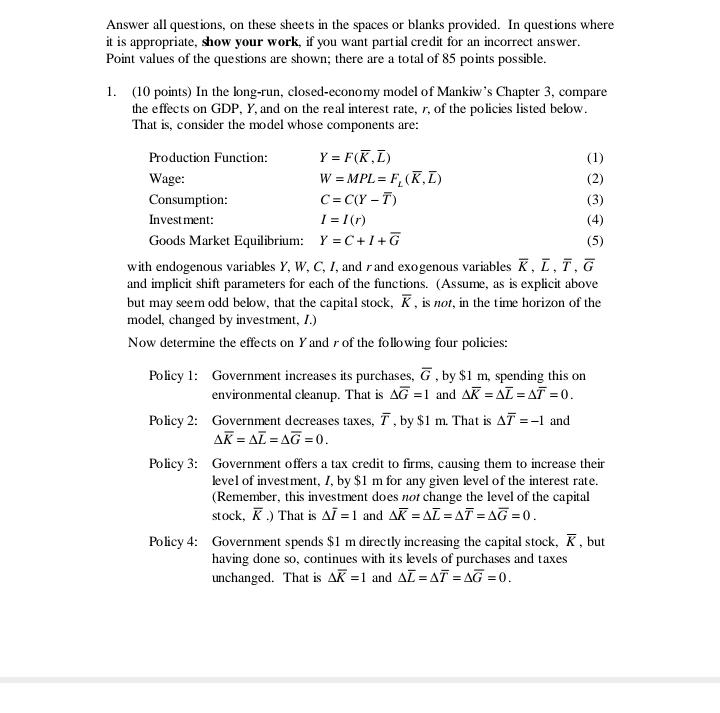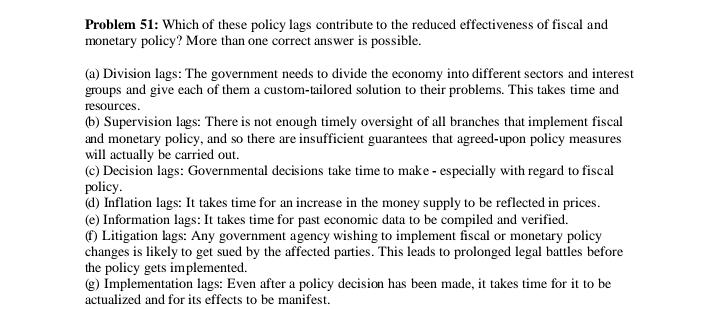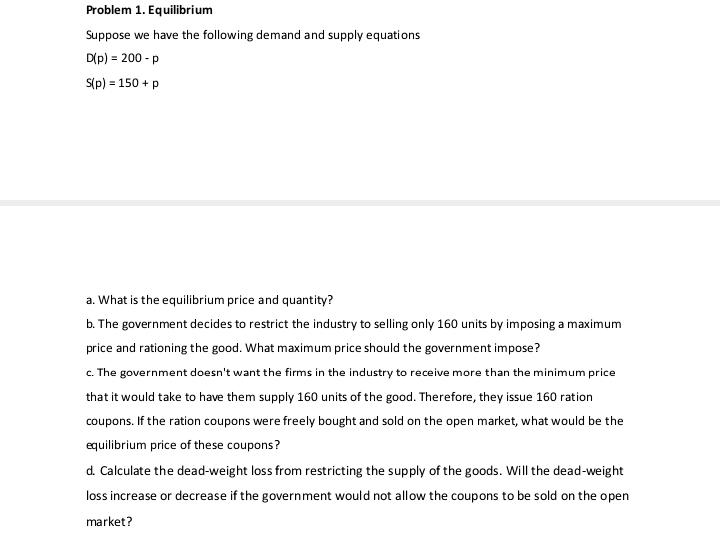Macro questions, help please.
Answer all questions, on these sheets in the spaces or blanks provided. In questions where it is appropriate, show your work, if you want partial credit for an incorrect answer. Point values of the questions are shown; there are a total of 85 points possible. 1. (10 points) In the long-run, closed-economy model of Mankiw's Chapter 3, compare the effects on GDP, Y, and on the real interest rate, r, of the policies listed below. That is, consider the model whose components are: Production Function: Y = F(K , I) (1) Wage: W = MPL = F, (K.[) (2 ) Consumption: C = C( Y - T) (3) Investment: I = 1(r) (4) Goods Market Equilibrium: Y =C+/+G (5 ) with endogenous variables Y, W, C, /, and r and exogenous variables K , I , T , G and implicit shift parameters for each of the functions. (Assume, as is explicit above but may seem odd below, that the capital stock, K , is not, in the time horizon of the model, changed by investment, I.) Now determine the effects on Y and r of the following four policies: Policy 1: Government increases its purchases, G , by $1 m, spending this on environmental cleanup. That is AG =1 and AK = AZ =AT =0. Policy 2: Government decreases taxes, 7 , by $1 m. That is AT =-1 and AK = AL =AG =0. Policy 3: Government offers a tax credit to firms, causing them to increase their level of investment, /, by $1 m for any given level of the interest rate. (Remember, this investment does not change the level of the capital stock, K .) That is A/ = 1 and AK = AL =AT = AG =0. Policy 4: Government spends $1 m directly increasing the capital stock, K , but having done so, continues with its levels of purchases and taxes unchanged. That is AK =1 and AZ =AT =AG =0.Problem 51: Which of these policy lags contribute to the reduced effectiveness of fiscal and monetary policy? More than one correct answer is possible. (a) Division lags: The government needs to divide the economy into different sectors and interest groups and give each of them a custom-tailored solution to their problems. This takes time and resources. (b) Supervision lags: There is not enough timely oversight of all branches that implement fiscal and monetary policy, and so there are insufficient guarantees that agreed-upon policy measures will actually be carried out. (c) Decision lags: Governmental decisions take time to make - especially with regard to fiscal policy. (d) Inflation lags: It takes time for an increase in the money supply to be reflected in prices. (e) Information lags: It takes time for past economic data to be compiled and verified. (f) Litigation lags: Any government agency wishing to implement fiscal or monetary policy changes is likely to get sued by the affected parties. This leads to prolonged legal battles before the policy gets implemented. (g) Implementation lags: Even after a policy decision has been made, it takes time for it to be actualized and for its effects to be manifest.6. (10 points) Using first the aggregate supply and demand framework, and then the expectations-augmented Phillips Curve, show the effects of an initially unexpected, once-and-for-all increase in a. The level of the money supply (using AD-AS), and b. The rate of growth of the money supply (using PhC). In both cases, starting from the long-run equilibrium shown in the diagrams, show where the economy goes in the diagram, in both the short run and in the long run, clearly labeling both the location of the economy and any shifts of curves. In addition, in the spaces beneath the diagrams write a short paragraph describing what happens and why. Be sure to explain the role of expectations in the adjustment process in both cases.Problem 1. Equilibrium Suppose we have the following demand and supply equations D(p) = 200 - p S(p) = 150 + p a. What is the equilibrium price and quantity? b. The government decides to restrict the industry to selling only 160 units by imposing a maximum price and rationing the good. What maximum price should the government impose? c. The government doesn't want the firms in the industry to receive more than the minimum price that it would take to have them supply 160 units of the good. Therefore, they issue 160 ration coupons. If the ration coupons were freely bought and sold on the open market, what would be the equilibrium price of these coupons? d. Calculate the dead-weight loss from restricting the supply of the goods. Will the dead-weight loss increase or decrease if the government would not allow the coupons to be sold on the open market










